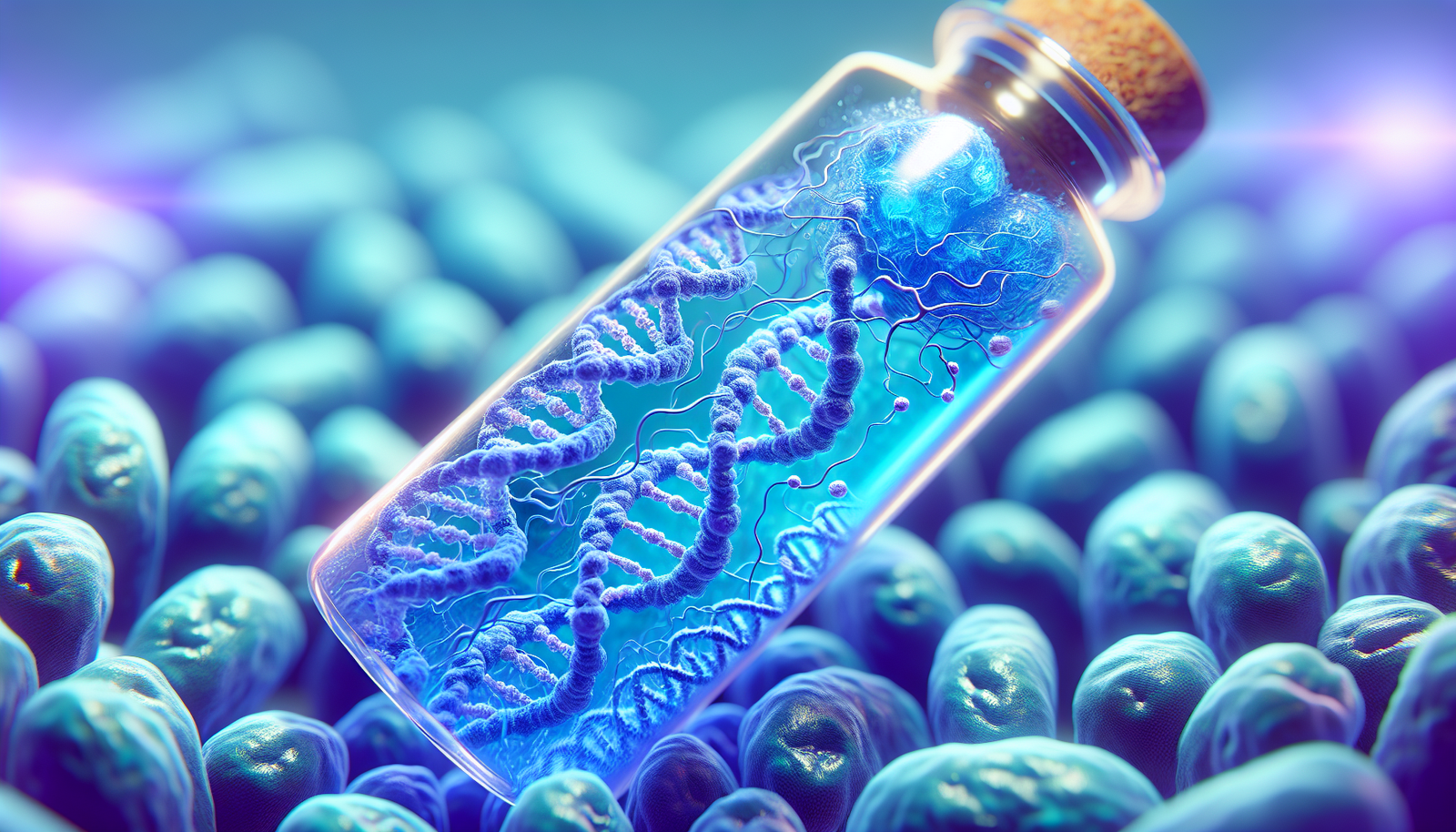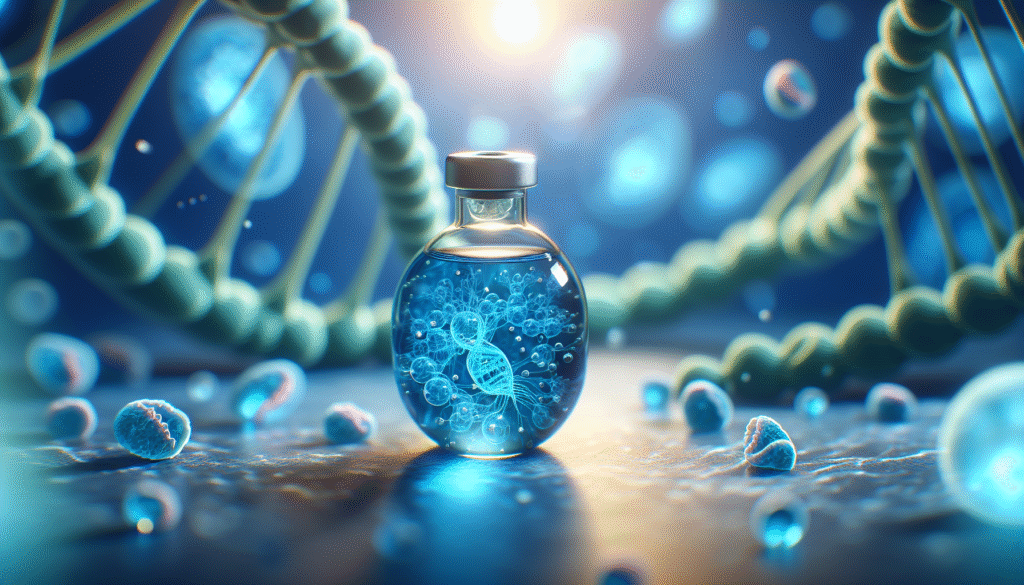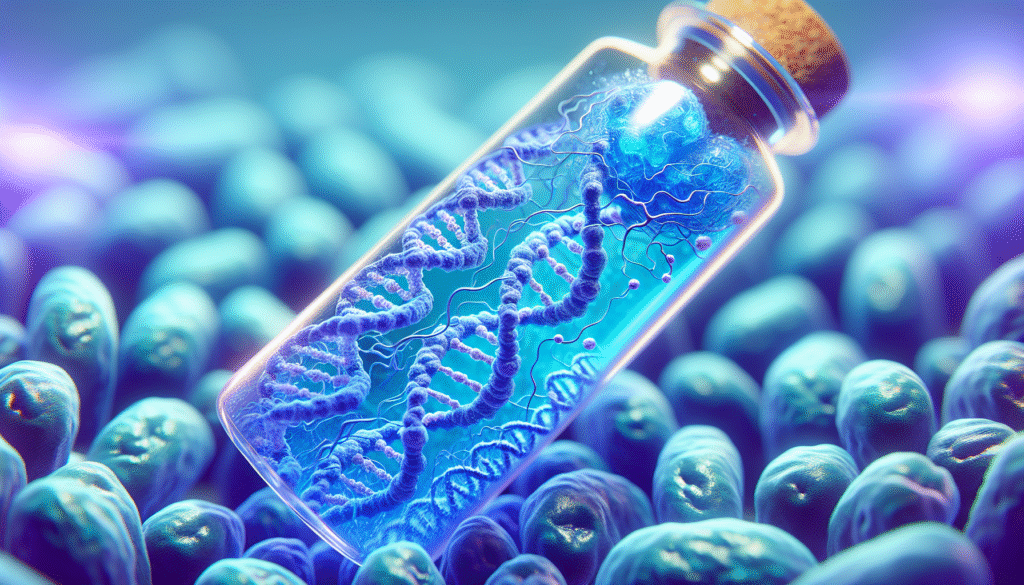
Have you ever considered how the intricate mechanisms of your cells facilitate repair and regeneration? The ability of cells to mend themselves is essential for maintaining overall health, and recent research has indicated that Methylene Blue may play a significant role in enhancing these cellular repair processes.
Understanding Methylene Blue
Methylene Blue, a synthetic dye that has been utilized for over a century, extends beyond its use in laboratories and textiles. Its applications in medicine pose intriguing possibilities, especially in the realm of cellular health.
Historical Context
Originally developed for dyeing purposes in the late 19th century, Methylene Blue has found entries in various medical treatments. Initially used to combat malaria, its multifaceted properties have since positioned it as a candidate for various health benefits, particularly in neuroprotection and cell metabolism.
Chemical Composition and Properties
Methylene Blue (MB) is derived from thionine, characterized by its distinctive blue color. Its molecular structure allows it to easily penetrate biological membranes, enabling it to interact with cellular components efficiently. Understanding its chemical properties is crucial to grasping how it influences cellular repair mechanisms.
Mechanism of Action
Methylene Blue operates primarily through its role in the electron transport chain (ETC), which is vital for ATP production in mitochondria. By improving mitochondrial function, MB enhances energy production, fostering an environment conducive to repair processes.
The Role of Mitochondria
Importance of Mitochondrial Function
Mitochondria, often referred to as the powerhouses of the cell, are essential for energy generation. They convert nutrients into adenosine triphosphate (ATP), the energy currency of cells. Healthy mitochondrial function is pivotal for cellular health and repair.
How Methylene Blue Positively Affects Mitochondrial Activity
Research indicates that Methylene Blue can transfer electrons within the ETC, particularly at complexes I and IV. This not only optimizes ATP production but also reduces oxidative stress— an element that can lead to cellular damage. By mitigating damage from reactive oxygen species (ROS), MB supports mitochondrial health and, consequently, cellular repair.

Enhancing Cellular Repair Mechanisms
Cellular Stress Responses
Cells constantly face stress from various sources such as UV radiation, toxins, and metabolic waste. How they respond to these stresses dictates their longevity and health. Methylene Blue’s ability to bolster cellular resilience is noteworthy.
Autophagy: The Cellular Cleanup Crew
Autophagy is a process where cells degrade and recycle components that are damaged or dysfunctional. Methylene Blue has been noted to promote autophagy, enabling cells to maintain homeostasis and enhance their repair capabilities. With increased autophagy, cells can clear debris more effectively, paving the way for regeneration.
DNA Repair Enhancement
Methylene Blue also influences cellular mechanisms linked to DNA repair, a fundamental aspect of maintaining genomic integrity. By upregulating specific repair pathways, MB aids in mitigating damage from environmental factors and oxidative stress.
Clinical Implications of Methylene Blue
Neuroprotective Effects
The neuroprotective properties of Methylene Blue have garnered attention in recent years, especially in conditions characterized by neurodegeneration. Studies suggest that MB can improve cognitive function and protect against conditions such as Alzheimer’s and Parkinson’s disease.
Impacts on Aging
Aging is intrinsically linked to cellular damage. Methylene Blue’s role in enhancing mitochondrial health and reducing oxidative stress positions it as a potential agent in combating age-related decline. The iterative cellular repair enhancements provided by MB could yield significant benefits in promoting longevity and healthspan.

Administration and Dosage
Safe Usage Guidelines
Methylene Blue is relatively safe when administered in appropriate doses. The typical dosage varies depending on the condition being treated, but anecdotal evidence suggests that low-dose administration may yield benefits with minimal side effects. Consulting a health professional before beginning any treatment is essential.
Methods of Administration
Methylene Blue can be administered in several ways, including oral ingestion, intravenous infusion, and topical application. Each method offers unique benefits and should be chosen based on individual circumstances and health objectives.
Side Effects and Precautions
While generally safe, Methylene Blue can cause side effects, including dizziness, headache, and gastrointestinal disturbances. Serious interactions may occur with certain medications, particularly those affecting serotonin levels. Awareness of these potential interactions is crucial in the decision-making process regarding its use.
Research and Future Directions
Ongoing Studies and Findings
Current research continues to unravel the multifaceted potential of Methylene Blue. Studies are exploring its application in various fields such as cardiology, oncology, and neurology. The ongoing collection of empirical evidence will lay the groundwork for broader clinical applications.
Innovative Uses in Medicine
Innovative uses of Methylene Blue extend beyond enhancing cellular repair. Researchers are investigating its potential utility as a contrast agent in medical imaging, its antimicrobial properties, and its effectiveness in treating conditions like septic shock. Each discovery adds to our understanding of MB’s role in modern medicine.
Potential Limitations and Challenges
Despite its promising benefits, challenges persist in standardizing Methylene Blue’s application across various fields. Research is needed to determine optimal dosages, efficacy in different populations, and long-term effects.
Conclusion
Methylene Blue serves as a compelling case study in the interplay between cellular health and therapeutic agents. Its ability to enhance cellular repair mechanisms through improved mitochondrial function, promotion of autophagy, and augmentation of DNA repair pathways illustrates its potential in preventive health strategies. As research unfolds, Methylene Blue could indeed redefine the landscape of treatment approaches to enhance life quality and longevity.
Methylene Blue illuminates a path toward understanding how enhancing cellular repair mechanisms can lead to broader health implications. With ongoing research and a deeper comprehension of its effects, it may soon become a cornerstone in approaches to dealing with cellular aging and degeneration, inviting the question of how you might consider incorporating these insights into your health regimen.